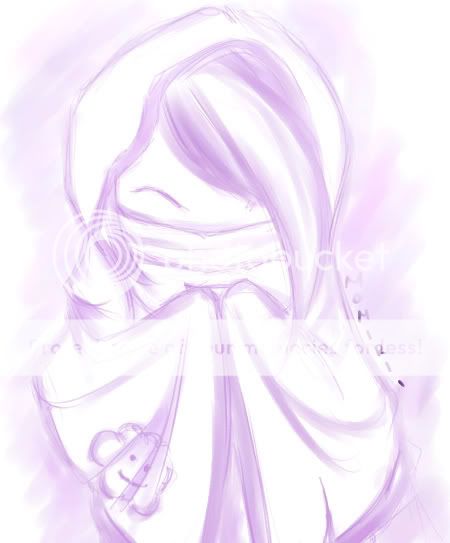Here's some avi art that I've received







From SugarRushh!!!
<3 x 123456789
ANGKOR AUJOURD’HUI
Les fameux temples en Angkor étaient en péril à cause de la guerre et de l’extorsion. Au début des années 90, Azedine Beschaouch, un architecte de formation, a été envoyé au Cambodge. Ce Tunisien est une des grandes figures de l’Unesco et il est aussi un spécialiste des dossiers délicats, les a sauvés de la destruction. Il prompte l’idée du classement d’Angkor au patrimoine mondial en péril. Le site est sauvé grâce à la communauté internationale, quatorze ans plus tard.
Angkor est la plus grande zone archéologique au monde et plus de 600 policiers surveillent ce site encore aujourd`hui. Le Cambodge abrite plus de 3000 temples dont certains sont complètements isolés dans la forêt. Plusieurs vols prennent place partout dans ce pays et il est victime d’un terrible saccage. Azedine Beschaouch et Pierre André Lablaude (membres de l’Unesco) répondent par un classement mondial de l’Unesco face à ce danger. L’Organisation des Nations Unies pour l’éducation, la science et la culture (UNESCO) doit faire face à un autre enjeu qui est l’envie
des promoteurs. Un des rares villages lacustres d’Angkor est en danger. Ils veulent détruire tout le paysage pour ensuite construire des bungalows et des hôtels de luxe. Un des répercussions de cet acte est le départ des habitants. L’Unesco va mettre le village sous protection et va construire des écoles afin de garder les habitants sur place.
La réhabilitation d’Angkor est encore un enjeu culturel et plusieurs personnes aujourd’hui, mettent leurs efforts pour garder cette zone sous protection.
-TITRE?-
Angkor était la capitale des rois de khmers du IXe au XVe siècle et il signifie « ville ». C’est un lieu colossal et archéologique comprenant les plus immenses assemblages de ruines sur toute la planète. Il se situe au nord-ouest du Cambodge et il est connu surtout pour son ornementation architecturale et pour sa beauté étonnante. Toute la région s’étend sur plus de 400km² La restauration de ce site était le plus grand projet prise par l’Unesco au Cambodge.
La langue officielle parlée en Angkor est le khmer. Le paysage est montagneux et dans la plaine centrale, là où la population est le plus concentrée, se trouve essentiellement des rizières, des hautes herbes et des zones boisés. Le territoire fut longtemps recouvert d’épaisses forêts mais la superficie de ces derniers a fortement décliner par de vastes coupes sauvages.
Biography and Career :
Francis Ford Coppola was born on April 7, 1939 in Detroit, Michigan, U.S. He is an American film director, screenwriter, vintner, and hotelier.
Francis Ford Coppola studied film at UCLA and while there, he made numerous short films, including some pornography. In the late 1960s, he started his professional career making low-budget films with Roger Corman and writing screenplays.
Following his directorial debut with You're a Big Boy Now , Francis Ford Coppola was offered the reins of the movie version of the Broadway musical Finian's Rainbow, starring Petula Clark, in her first American film, and veteran Fred Astaire. Producer Jack Warner was nonplussed by Coppola's shaggy-haired, bearded, "hippie" appearance and generally left him to his own devices.
Francis Ford Coppola took his cast to the Napa Valley for much of the outdoor shooting, but these scenes were in sharp contrast to those obviously filmed on a Hollywood soundstage, resulting in a disjointed look to the film. Dealing with outdated material at a time when the popularity of film musicals was already on the downslide, Coppola's end result was only semi-successful, but his work with Clark no doubt contributed to her Golden Globe Best Actress nomination.
In 1971, Francis Ford Coppola won an Academy Award for his screenplay for Patton. However, his name as a filmmaker was made as the co-writer and director of The Godfather (1972) and The Godfather Part II (1974), which both won the Academy Award for Best Picture — the latter being the first sequel to do so.
During this period Francis Ford Coppola also wrote the screenplay for the 1974 remake of the critical and commercial failure, The Great Gatsby (with Mia Farrow and Robert Redford), and produced George Lucas's breakthrough film, American Graffiti.
Following the success of The Godfather and its sequel, Francis Ford Coppola set about filming an ambitious version of Joseph Conrad's Heart of Darkness, set during the Vietnam War. The film, entitled Apocalypse Now (1979), was beset by numerous problems, including typhoons, drug abuse, nervous breakdowns, Martin Sheen's heart attack, and Marlon Brando's bloated appearance (which Coppola attempted to hide by shooting him in the shadows). It was delayed so often it was nicknamed Apocalypse Whenever. The film was equally lauded and hated by critics when it finally appeared, and the cost nearly bankrupted Coppola's nascent studio American Zoetrope. The 1991 documentary film Hearts of Darkness: A Filmmaker's Apocalypse, directed by Eleanor Coppola (Francis's wife), Fax Bahr, and George Hickenlooper , chronicles the difficulties the crew went through making Apocalypse Now, and features behind the scenes footage filmed by Eleanor.
Despite the setbacks and ill health Francis Ford Coppola suffered during the making of Apocalypse Now, he kept up with film projects, presenting in 1981 a restoration of the 1927 film Napoléon that was edited and released in the United States by American Zoetrope. However it wasn't until the experimental musical One from the Heart (1982) that he returned to directing. Unfortunately, the film was a huge failure, although it developed a cult following in later years.
In 1986 Francis Ford Coppola, with George Lucas, directed the Michael Jackson film for Disney theme parks, Captain Eo, which at the time was the most expensive film per minute ever made.
In 1990 Francis Ford Coppola completed the Godfather series with The Godfather Part III, which while not as critically acclaimed as the first two movies, was still a box office success.
Francis Ford Coppola's daughter Sofia is also a filmmaker (see The Virgin Suicides and Lost in Translation). His nephew Nicolas Cage is an acclaimed actor in his own right.
In recent years, Francis Ford Coppola with his family has extended his talents to winemaking in California's Napa Valley and opening resorts in Guatemala and Belize, inspired by his accommodation in the Philippines during the making of Apocalypse Now, with decor supervised by Eleanor Coppola.
http://people.famouswhy.com/francis_ford_coppola/
Date of Birth 7 April 1939, Detroit, Michigan, USA
Height 6' (1.83 m)
Mini Biography
He was born in 1939 in Detroit, USA, but he grew up in a New York suburb in a creative, supportive Italian-American family. His father was a composer and musician Carmine Coppola. His mother had been an actress. Francis Ford Coppola graduated with a degree in drama from Hofstra University, and did graduate work at UCLA in filmmaking. He was training as assistant with filmmaker Roger Corman, working in such capacities as soundman, dialogue director, associate producer and, eventually, director of Dementia 13 (1963), Coppola's first feature film. During the next four years, Coppola was involved in a variety of script collaborations, including writing an adaptation of This Property is Condemned, by Tennessee Williams (with Fred Coe and Edith Sommer), and screenplays for Is Paris Burning?, and Patton, the film for which Coppola won a Best Adapted Screenplay Academy Award. In 1966, Coppola's 2nd film brought him critical acclaim and a Master of Fine Arts degree. In 1969, Coppola and George Lucas established American Zoetrope, an independent film production company based in San Francisco. The company's first project was THX 1138 (1971), produced by Coppola and directed by Lucas. Coppola also produced the second film that Lucas directed, American Graffiti (1973), in 1973. This movie got five Academy Award nominations, including one for Best Picture.
In 1971, Coppola's film The Godfather (1972) became one of the highest-grossing movies in history and brought him an Oscar for writing the screenplay with Mario Puzo The film was a Best Picture Academy Award-winner, and also brought Coppola a Best Director Oscar nomination. Following his work on the screenplay for The Great Gatsby (1974), Coppola's next film was The Conversation (1974), which was honored with the Golden Palm Award at the Cannes Film Festival, and brought Coppola Best Picture and Best Original Screenplay Oscar nominations. Also released that year, The Godfather: Part II (1974). rivaled the success of The Godfather (1972), and won six Academy Awards, bringing Coppola Oscars as a producer, director and writer. Coppola then began work on his most ambitious film, Apocalypse Now (1979), a Vietnam War epic that was inspired by Joseph Conrad's Heart of Darkness (1994) (TV). Released in 1979, the acclaimed film won a Golden Palm Award at the Cannes Film Festival, and two Academy Awards . Also that year, Coppola executive produced the hit The Black Stallion (1979). With George Lucas, Coppola executive produced Kagemusha, directed by Akira Kurosawa, and Mishima: A Life in Four Chapters, directed by Paul Schrader, and based on the life and writings of Yukio Mishima. Coppola also executive produced such films as The Escape Artist (1982), Hammett (1982) The Black Stallion Returns (1983), Barfly (1987), Wind (1992), The Secret Garden (1993) etc.
He helped to make a star of his nephew, Nicolas Cage. Personal tragedy hit in 1986 when his son Gio died in a boating accident. Francis Ford Coppola is one of America's most erratic, energetic and controversial filmmakers.
http://www.imdb.com/name/nm000033


